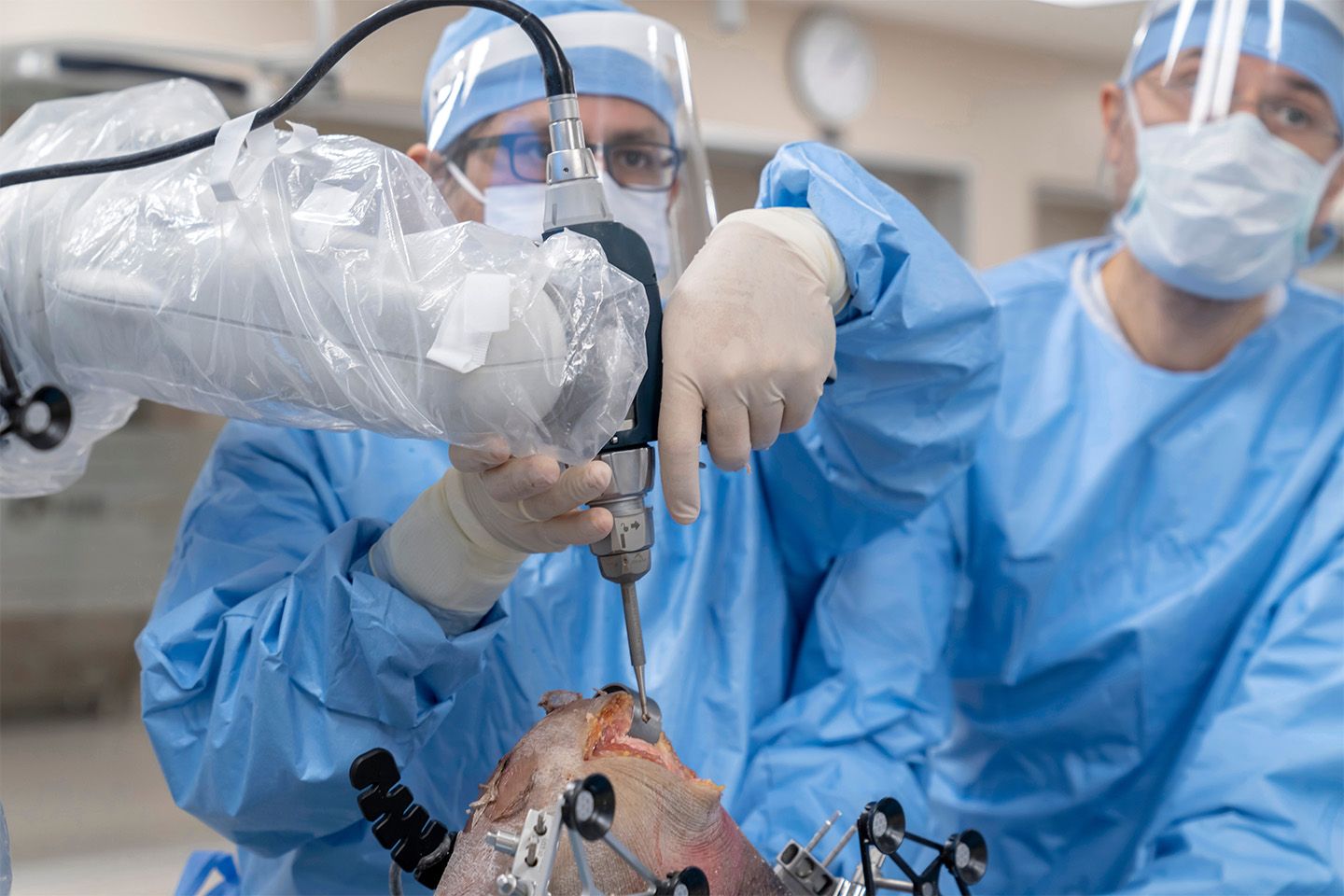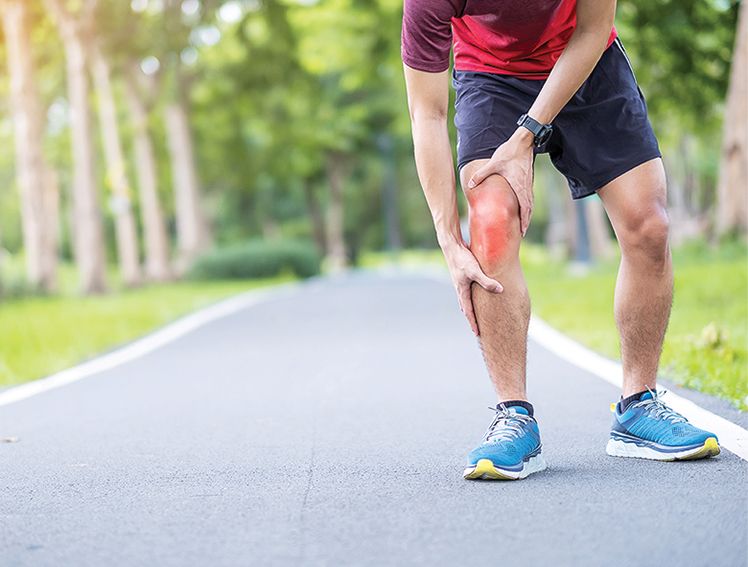
Introduction
Knee replacement surgery has long been a beacon of hope for individuals suffering from debilitating knee pain and reduced mobility. Over the years, advancements in medical technology have led to significant improvements in surgical techniques and outcomes. One of the most groundbreaking developments in this field is the integration of robotics into knee replacement procedures, paving the way for more precise and personalized surgeries.
The Evolution of Knee Replacement Surgery
Traditional Knee Replacement
Traditional knee replacement surgery, while effective, relies on the surgeon's skill and experience to accurately align the prosthesis with the patient's anatomy. While most surgeons are highly trained and skilled, there's always a margin for human error.
Enter Robotic Surgery
The advent of robotic technology in orthopedic surgery has revolutionized the way we approach knee replacements. By combining the expertise of surgeons with the precision of robots, we have entered an era of unparalleled accuracy and customization.
The Power of Active Robotic Knee Replacement
Active Robotics: Empowering Patients
Active robotics in knee replacement is a game-changer for patients seeking a quicker recovery and a return to an active lifestyle. By leveraging robotic assistance, surgeons can perform less invasive procedures, which often lead to reduced pain, shorter hospital stays, and faster rehabilitation. This innovative technology empowers both surgeons and patients alike. By utilizing real-time data feedback and dynamic adjustments during the surgery, the active robotic system ensures unparalleled precision in implant placement. This level of adaptability allows for a truly tailored approach, accounting for any subtle changes in the patient's anatomy or dynamics during the procedure. As a result, patients experience not only reduced pain and a faster recovery but also a knee replacement that feels remarkably natural. Active robotics bring a new level of responsiveness to the surgical process, paving the way for an active future with improved mobility for individuals undergoing knee replacement.
Precision at its Core
Robotic knee replacement surgery utilizes advanced imaging and mapping techniques to create a 3D model of the patient's knee. This model guides the surgeon and the robotic arm throughout the procedure, ensuring precise bone cuts and optimal implant placement. This level of precision is unparalleled in traditional surgeries.
Personalized Planning
With robotic surgery, each procedure is tailored to the patient's unique anatomy. This means that the implant is positioned and aligned in a way that best mimics the natural movement of the knee, potentially leading to better post-operative function and longevity.
Achieving Native Knee Phenotypes: Precision Beyond Measure
Robotic technology plays a pivotal role in striving for the replication of native knee phenotypes. Through intricate mapping and real-time adjustments, robots assist surgeons in recreating the natural biomechanics of the knee joint. This level of precision goes beyond what human hands can achieve alone. By fine-tuning the placement and alignment of the prosthesis to mirror the patient's original knee anatomy, the goal is to restore function and movement in a way that closely emulates the body's innate design. This approach not only contributes to improved post-operative comfort but also endeavors to provide patients with a knee replacement that feels remarkably close to their original joint, offering a renewed sense of mobility and confidence.
Advantages of Robotic Knee Replacement
- Faster Recovery: Active robotics enable less invasive procedures, resulting in reduced pain, shorter hospital stays, and faster rehabilitation.
- Minimized Soft Tissue Damage: Robotic-assisted surgery allows for smaller incisions, which means less disruption to surrounding tissues. This can lead to reduced pain and a faster recovery.
- Reduced Blood Loss: The precision of the robotic system helps minimize blood loss during surgery, which can be especially important for patients with specific medical conditions or concerns about blood loss.
- Customized Implant Positioning: The robotic system ensures that the implant is placed in the optimal position for each individual patient, which can lead to a more natural feel and improved function post-surgery.
- Lower Risk of Complications: With the high level of precision and personalized planning, there's a lower risk of complications such as implant misalignment, instability, and premature wear.
- Improved Long-Term Outcomes: Studies have shown that patients who undergo robotic knee replacement surgery often experience improved long-term outcomes, including better range of motion and overall satisfaction with the procedure.
- Better Implant Survival Rates: The accuracy of implant placement in robotic-assisted surgeries may contribute to improved implant survival rates, potentially reducing the need for revision surgeries in the future.
- Enhanced Imaging and Feedback: The advanced imaging technology used in robotic knee replacement provides real-time feedback to the surgeon, allowing for adjustments to be made during the procedure to ensure optimal results.
- Suitable for Complex Cases: Robotic-assisted knee replacement can be particularly beneficial for patients with complex anatomical considerations or those who have previously undergone knee surgeries.
The Future of Knee Replacement: Embracing Technology
The integration of robotics into knee replacement surgery represents a significant leap forward in orthopedic medicine. By combining the expertise of skilled surgeons with the precision of robots, we can offer patients a level of precision and personalization that was once unimaginable. The era of robotic knee replacement surgery has dawned, and with it comes new hope for individuals seeking a return to an active life with reduced pain
Overcoming Common Concerns
Safety and Reliability
Robotic knee replacement technology is rigorously tested and constantly refined. The systems are equipped with fail-safes and redundant measures to ensure the highest level of safety for patients.
Surgeon Expertise
It's important to note that while robotics play a significant role, the surgeon remains an integral part of the procedure. They oversee the entire process, from planning to execution, with the assistance of the robotic system.
Accessibility
As technology advances, the availability of robotic-assisted knee replacement is steadily increasing. More hospitals and orthopedic centers are adopting this technology, making it accessible to a broader range of patients.
The Path Forward: Making Informed Decisions
If you're considering knee replacement surgery, the future is now. Embrace the power of robotic technology and take the first step towards a brighter, more mobile tomorrow. Consult with an experienced orthopedic surgeon to discuss if robotic knee replacement is the right option for you.
In conclusion, the marriage of robotics and knee replacement surgery is reshaping the landscape of orthopedic medicine. The precision, personalization, and potential for faster recovery offered by robotic-assisted procedures are opening new doors for patients seeking relief from knee pain. Embrace this advancement and embark on your journey toward a more active life and improved mobility.
The blog has been authored by Dr. Ravi Teja Rudraraju. The content is for informational purposes only and should not be taken as professional medical advice. More about the author



